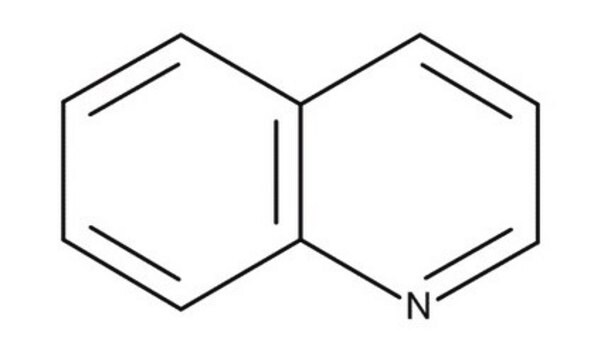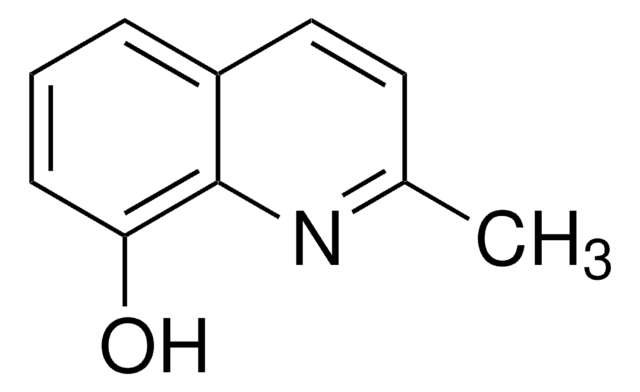22550
Quinaldine
≥95.0% (GC)
Synonym(s):
2-Methylquinoline
About This Item
Recommended Products
assay
≥95.0% (GC)
form
liquid
refractive index
n20/D 1.612 (lit.)
bp
105-107 °C/10 mmHg (lit.)
248 °C (lit.)
mp
−9-−3 °C (lit.)
solubility
chloroform: soluble(lit.)
diethyl ether: soluble(lit.)
water: insoluble(lit.)
density
1.058 g/mL at 25 °C (lit.)
SMILES string
Cc1ccc2ccccc2n1
InChI
1S/C10H9N/c1-8-6-7-9-4-2-3-5-10(9)11-8/h2-7H,1H3
InChI key
SMUQFGGVLNAIOZ-UHFFFAOYSA-N
Gene Information
human ... CYP1A2(1544)
Looking for similar products? Visit Product Comparison Guide
General description
Application
- In the preparation of squaraine dyes (quinaldine-based squaraine dyes) which is biologically significant and can be used as an metal ion sensor.
- To prepare the pH sensitive colorimetric chemo sensors.
Features and Benefits
Caution
signalword
Warning
Hazard Classifications
Acute Tox. 4 Dermal - Acute Tox. 4 Oral - Aquatic Chronic 3 - Eye Irrit. 2 - Muta. 2 - Skin Irrit. 2
Storage Class
10 - Combustible liquids
wgk_germany
WGK 3
flash_point_f
174.2 °F - closed cup
flash_point_c
79 °C - closed cup
ppe
Eyeshields, Faceshields, Gloves, type ABEK (EN14387) respirator filter
Choose from one of the most recent versions:
Already Own This Product?
Find documentation for the products that you have recently purchased in the Document Library.
Customers Also Viewed
Our team of scientists has experience in all areas of research including Life Science, Material Science, Chemical Synthesis, Chromatography, Analytical and many others.
Contact Technical Service













